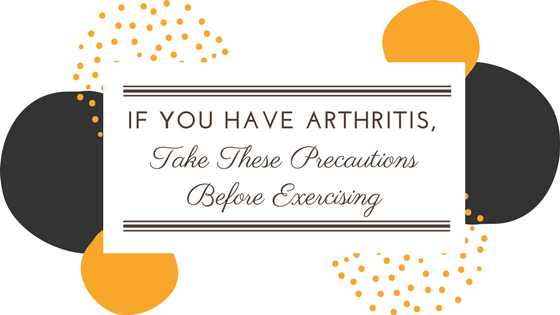If a person is in pain, it can be difficult to move, even if they try using sheer willpower. People with chronic pain, including those who have arthritis, know this all too well. However, exercise can help in a number of ways. Not only is it great for maintaining overall joint function, but it also helps to alleviate pain, stiffness, and fatigue. Anyone who wants to improve their condition and feel physically better should consider taking up certain types of exercise. Aerobics, stretching, strength training and balancing are all excellent activities to incorporate into one’s everyday life. Of course, a person dealing with pain should always consult with their doctor before taking up any exercise routine.
There are also many great programs tailored specifically for individuals with arthritis. For example, Fit and Strong is a program aimed at older people who suffer from osteoarthritis. Specific water-based activities like the Arthritis Foundation’s Aquatic Program, are performed in pools heated to around 90 degrees Fahrenheit and include a good variety of aerobic activities that push the user’s range of motion. Tai chi is also excellent because it is a low-impact type of exercise that improves the overall flexibility and strength of the muscles of the lower body. It also enhances a person’s balance and gait. Finally, strength training is excellent for improving the function of the body, increasing muscle strength and decreasing pain.
Individuals with arthritis can make exercising easier by following these tips:
- Only schedule workouts for times of the day that are least likely to result in pain and inflammation. It’s essential to avoid exercising at any time when one’s pain and muscle stiffness tends to be worse.
- Prior to any exercise regimen, it’s a good idea to take a warm shower or bath or directly apply heat to the joints to relieve soreness. The opposite can be done following a workout by applying cold packs.
- Anyone with arthritis should be careful to progress their exercises slowly and lower their activity if the joints become red, warm and painful.
- It’s essential for a person to listen to their body and avoid pushing themselves too hard when feeling intense pain during exercise.
- People with rheumatoid arthritis should take extra care while exercising and rest more to avoid pain, inflammation, and fatigue during a flare-up.
- Only use a range of motion that’s comfortable and stop doing a specific activity if it causes pain.

